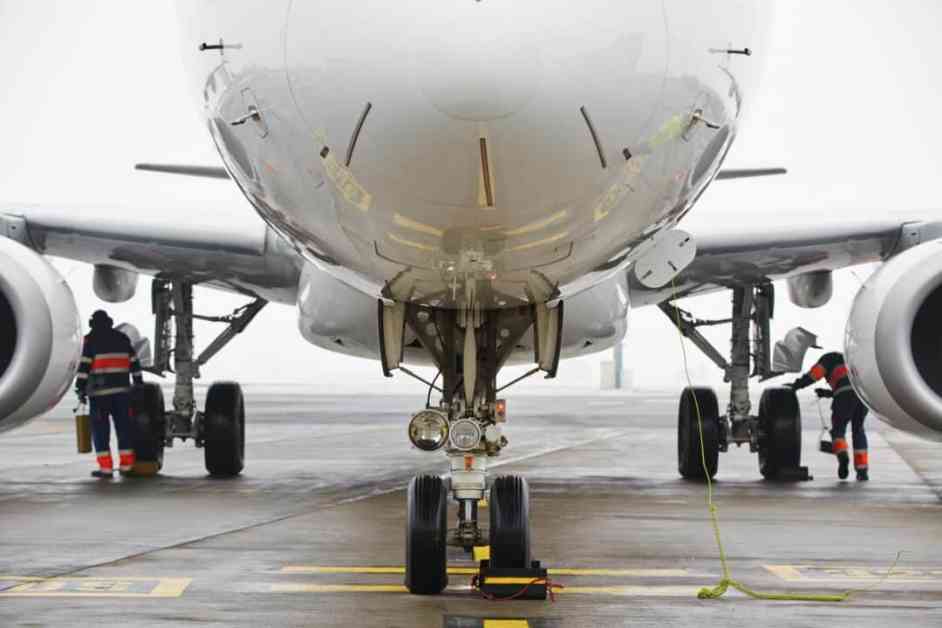Global airfreight rates continued to show strength last week, as reported by the TAC Index, a leading price reporting agency for air freight. The Baltic Air Freight Index (BAI00) rose by 2.2 percent in the week ending on August 12, marking another solid increase during a season when rates typically decline. This brings the year-on-year gain to 10.0 percent, indicating a robust market. Market experts are divided on whether the peak season rise has arrived early or if there is still a further surge in rates to come in the weeks ahead. However, there is a general consensus that the market has been unusually firm for this time of year.
Strong Rates Out of China
Rates out of China saw significant increases, particularly to Europe, the US, and the UAE. The outbound routes from Hong Kong (BAI30) saw a gain of 0.9 percent week-on-week (WoW), with a year-on-year (YoY) increase of 20.3 percent. Similarly, outbound Shanghai experienced a WoW increase of 1.8 percent, leading to a YoY rise of 29.8 percent. There were also positive gains on rates out of Seoul to Europe, which was included in the data for the first time this week, as well as from India to Europe and the US. However, rates from Vietnam were on a downward trend.
Firm Rates in Europe
European airfreight rates also showed strength, with the outbound routes from Frankfurt (BAI20) recording an impressive 8.0 percent WoW increase. This was driven by significant gains on lanes to North America and China, resulting in a YoY decline of -16.8 percent. Outbound London (BAI40) also saw a rise of 3.7 percent WoW, helping reduce the YoY fall on that index to -21.3 percent.
Positive Trends from the Americas
From the Americas, the index of outbound routes from Chicago (BAI50) jumped by 6.5 percent WoW, with higher rates to South East Asia leading to a YoY decline of -16.3 percent. Overall rates from the US were on the rise to China and South America, particularly on the lanes out of Miami, although they experienced a slight decrease to Europe.
The airfreight market stability has been a topic of discussion among industry experts, with some attributing the firm rates to a combination of factors such as increased demand, capacity constraints, and ongoing supply chain disruptions. While the peak season traditionally sees a surge in rates, the current market conditions have been stronger than expected, prompting speculation about the future trajectory of airfreight rates.
Factors Influencing Airfreight Rates
One of the key factors influencing airfreight rates is the imbalance between supply and demand. The global air cargo industry has been grappling with capacity constraints due to reduced passenger flights, which has significantly impacted the availability of cargo space. As a result, airlines have been forced to operate fewer flights, leading to a shortage of capacity and higher rates.
Another factor contributing to the firmness of airfreight rates is the ongoing disruptions in the supply chain. The COVID-19 pandemic has caused widespread disruptions to global trade, leading to delays in shipping and a backlog of cargo. As a result, shippers have turned to airfreight as a faster alternative, further increasing demand and putting pressure on rates.
Additionally, the rise in e-commerce activities has fueled the demand for airfreight services, as consumers increasingly rely on online shopping for their purchases. This trend has led to a surge in small parcels and express shipments, further straining the capacity of airfreight carriers and contributing to the strength of rates.
Market Outlook and Predictions
Looking ahead, industry experts are closely monitoring the airfreight market to gauge the trajectory of rates in the coming weeks. While the current market conditions suggest a strong demand for airfreight services, uncertainties remain regarding the impact of geopolitical events, economic fluctuations, and the evolving COVID-19 situation on the market.
Some analysts predict that the airfreight market will continue to see firm rates in the near term, driven by ongoing capacity constraints and robust demand. However, others caution that the market dynamics could shift rapidly, especially as countries reopen their borders and economies recover from the pandemic-induced slowdown.
In conclusion, the airfreight market stability continues to be a topic of interest for industry stakeholders as they navigate the complexities of the current market environment. While the recent data from the TAC Index indicates a firm market with rising rates, the future trajectory of airfreight rates remains uncertain, with various factors at play that could influence market dynamics in the weeks and months ahead.













